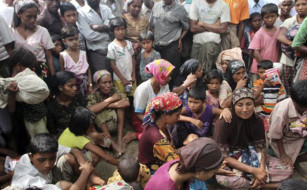I. Katz, The Common Camp: Architecture of Power and Resistance in Israel–Palestine, reviewed by Penny Green

State Crime Journal Special Issue on Abolitionism, Settler Colonialism and State Crime
When Hannah Arendt wrote that the camp was “the only ‘country’ that the world had to offer the stateless,” she was commenting not only on the Nazi genocidal concentration camps but also on the refugee or internment camp which was supposedly created to provide relief and safety for those fleeing state violence. The practice of concentrating civilians in guarded camps, as part of wartime counter-insurgency strategies supporting ethnically-targeted eliminationist aims, or in the context of the imperial project of preserving physical and moral hygiene, predated the Nazi concentration camps of the 1930’s (Smith and Stucki 2011). The German annihilation of over eighty per cent of indigenous Herero in 1904 led to the creation of concentration camps, supported by German missionaries, which were characterised by slave labour, hunger and disease (Mamdani 2002). Colonial concentration camps, of the kind detailed by Elkins (2005) and Anderson (2006) in Kenya, operated on the basis of what Mamdani calls “race branding” and allowed not only for the isolation of groups identified as “enemy” (e.g. the Kikuyu) but for their ready extermination. The inherent relationship between the camp and colonialism evident in the foregoing examples is central to Katz’s extensive survey of the camp phenomena in historic Palestine … (read more).
State Crime Journal Special Issue on Abolitionism, Settler Colonialism and State Crime









































